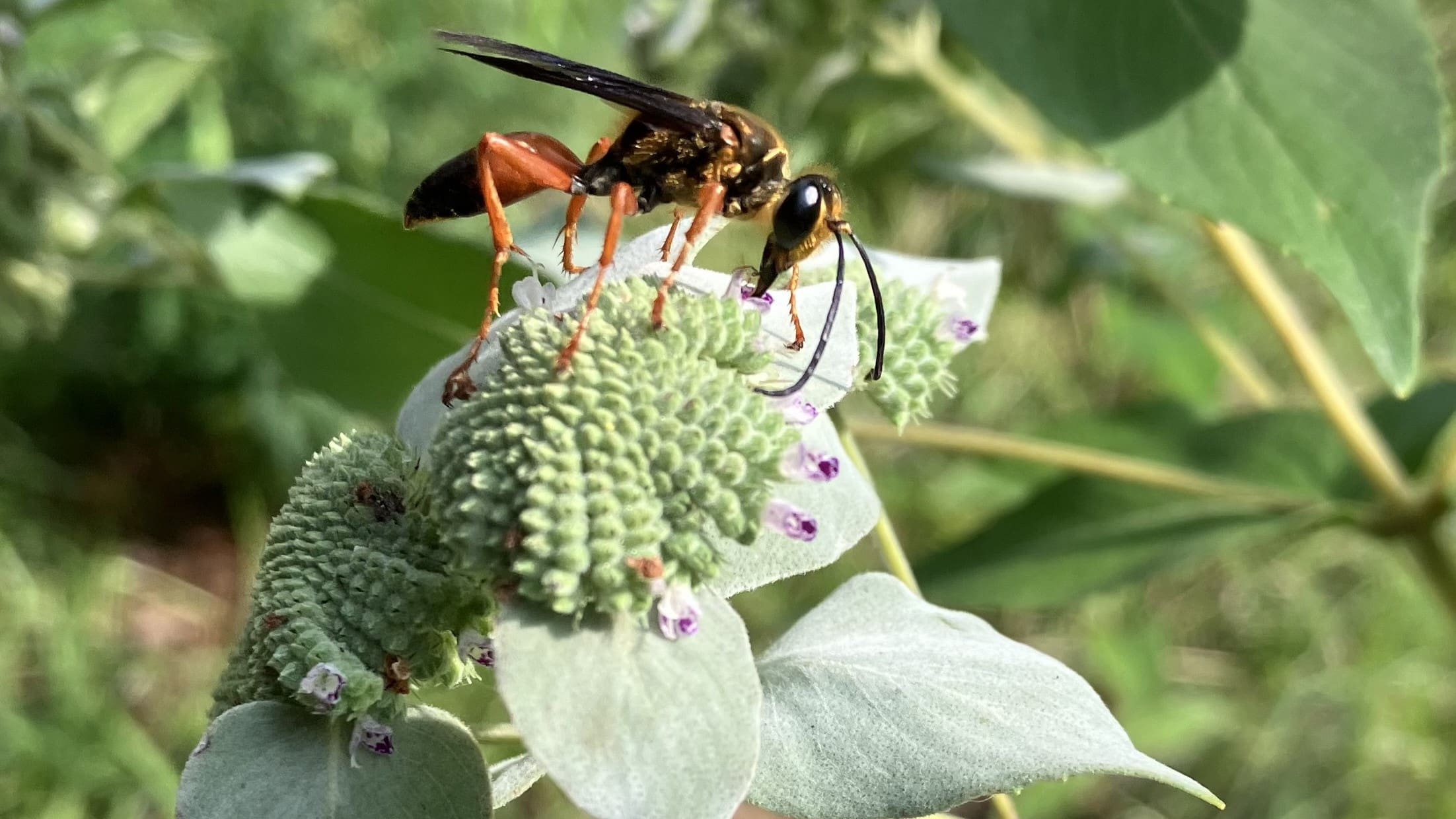by Chuck Hubbuch
The mountain mints
The mountain mint genus, Pycnanthemum, is comprised of twenty to twenty-five species that range across the United States and Canada. Of the fourteen species native to South Carolina, eleven are right here in the Upstate. These mountain mints offer a variety of floral display, leaf shape, and cultivation tolerances. They can be found in sun or shade and moist to dry soils. They range from about two feet to six feet tall. This wide variety means that there is at least one mountain mint for every garden. These plants are best known among native plant enthusiasts for the wide variety and large numbers of pollinating insects that visit their flowers. Another plus is that deer tend to avoid them—presumably because of the strong minty fragrance of their leaves.
Here are some details about mountain mints we’re currently growing at Upstate Native Nursery which will be available at upcoming plant sales. All of them have small flowers in dense heads at the top and upper axils of the stems. Their flowers are white or pale pink (some with pink to purple spots) and bloom for several weeks during the summer.
Broad-leafed species These species have comparatively broad leaves. At the top of the stem, the leaves are white and they form a ring around the flower head that is showy enough to compete for attention among colorful summer wildflowers such as butterfly milkweed (Asclepias tuberosa) and black-eyed Susan (Rudbeckia spp.).
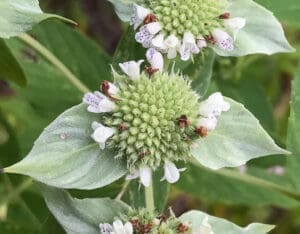
Pycnanthemum muticum, the blunt mountain mint, may be the species best known to gardeners and the most available in nurseries. It has upright stems, conspicuous white leaves around the flower head, and spreads by rhizomes. In fact, it spreads so well that it may have given other species a bad name. It is a little aggressive but in a sunny, reasonably moist site where it has room to grow, it’s a beautiful, three-foot-tall plant. In a dry site, it will grow more slowly.
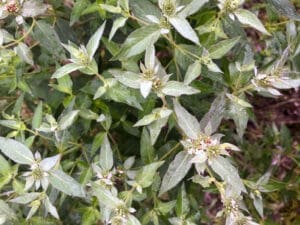
Pycnanthemum beadlei, Beadle’s mountain mint, is considered to be a close relative of P. muticum and is similar in appearance and cultivation tolerances. It grows about a foot taller, flowers later, and is more drought tolerant. It is reported to spread at a moderate rate and that’s what we’ve observed here at the nursery. Probably a better choice for a small, sunny garden.
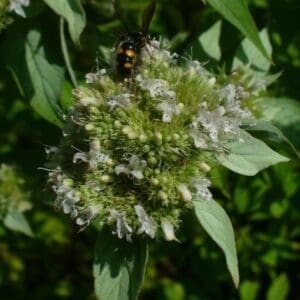
Pycnanthemum pycnanthemoides, Southern mountain mint, and P. incanum, hoary mountain mint, are considered to be closely related. They resemble the previous two species in having upright stems, showy white leaves around the flower head, and spread by rhizomes. They’re taller than P. muticum and spread more slowly. P. incanum grows to about four feet tall, while P. pycnanthemoides can reach six feet. They’re adaptable and will grow well in a sunny site with moist to well-drained soils.
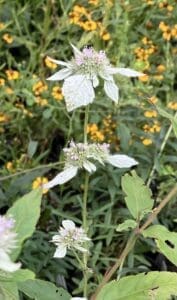
Narrow-leafed species
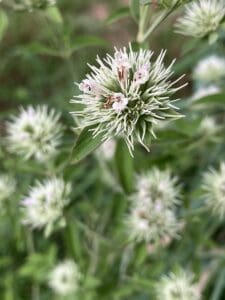
Pycnanthemum flexuosum, savanna mountain mint, is distinct among the species discussed here. It grows two to three feet tall, has upright stems, and spreads slowly by rhizomes. Its small flowers are borne in dense balls of soft bristles that are unlike any other mountain mint in our area. Its leaves are about two inches long and less than an inch wide, much smaller than the broad-leaved species. It is easy to grow in the garden, tolerating most soil types and full sun to part shade.
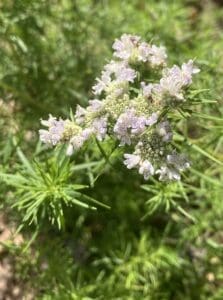
Pycnanthemum tenuifolium, narrow-leaf mountain mint, and Pycnanthemum verticillatum, whorled mountain mint, are considered to be close relatives. These two species have narrow leaves and grow to about three feet tall. Each has branched stems that give it a bushy appearance. Their dense clusters of flower heads at the branch tips lack the showy white ring of leaves of other mountain mints. They are easy to grow in sun to part shade and are adaptable to most soil conditions. P. tenuifolium has smooth, narrow leaves that are only an eighth of an inch wide. It is the earliest of the mountain mints to flower in the Upstate, starting in May.
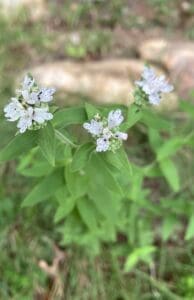
The leaves of P. verticillata are a little wider and distinctively fuzzy. It begins flowering in late July after P. tenuifolium has finished. You can plant both of these species to keep pollinators busy all summer.
At Upstate Native Nursery, we believe mountain mints deserve to be as well-known as purple coneflower (Echinacea purpurea) and butterfly milkweed (Asclepias tuberosa). Every garden should contain at least one of these pollinator magnets … but with this wide variety of species, one may not be enough!

